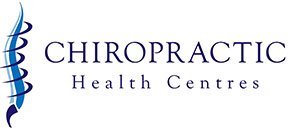Chiro ‘i.e. hand’ + praktikos ‘i.e.practice’
The first chiropractic adjustment was in September 1895 by David Daniel Palmer on a man named Harvey Lillard, who had partially lost his hearing 17 years prior. After noticing an abnormality in his vertebrae Palmer adjusted his upper back, and his hearing gradually improved.
This suggested to Palmer that misalignments of the spine could be somehow connected to seemingly unrelated dysfunctions in this body. He believed that nerves trapped within misaligned joints, specifically the vertebrae, interrupted nerve signals crucial to a fully functioning nervous system and overall health. By using manual manipulation, he could feel the ‘subluxations’ (or misalignments) and adjust them back in to place.
In 1897, Palmer established the ‘Palmer School of Cure’, or the ‘Palmer College of Chiropractic’ as it is now known, in Iowa, USA. The success of his first adjustment attracted interest and the discipline gained popularity.
Chiropractors were first licensed by law in the US in 1913. In the UK, the Chiropractors Act 1994 provides statutory regulation, governed by the General Chiropractic Council (GCC).
Different methods in chiropractic
There are a variety of different approaches to chiropractic, particularly with the different methods used (around 150!). Some ‘crack’ your back, whilst others use gentle massage-like techniques, or props such as an ‘activator’ to adjust your back.
Don’t worry too much about which method is best for you – all are carried out with the aim of realigning your joints and are considered safe for most cases. All licensed practitioners here in the UK are registered with the General Chiropractic Council to ensure standards of excellence are maintained and you receive the best treatment available.
If you have a specific preference, give us a call and we can advise on which practitioner may be right for you.
Who is chiropractic suitable for?
Chiropractic is suitable for almost any joint-related condition.
Chiropractic adjustments work as both a form of relief and prevention. The majority of our patients come for either relief from existing pains and strains, or for help in preventing these joint-related dysfunctions. We witness daily the impact of skeletal misalignment, from lack of mobility, muscular tensions, pain or inflammation, through to disc pressure and nerve compressions. Take a look at specific symptoms we can help with.
Our chiropractors will analyse your posture, balance, and joints – including ankles, feet, hips, and shoulders – as well as your jaw, and of course your spine. By the end of your initial consultation, your chiropractor will have devised an individually-tailored care plan specific to your symptoms and goals, which may include advise on nutrition and exercise or a referral to the appropriate specialist if we aren’t best suited to treating your case.


